While rating differences give the chance each player wins an individual game, we show in a recent blog contribution how this information is parlayed into the chance each player wins a particular multi-game match. That is, rating differences lead to match odds.
How well does this work?
A look at the Eurotour
The Dynamic Billiard Eurotour is a series of 9-Ball events throughout Europe with a double-elimination qualifying phase that advances players to a final elimination round. All matches are a race to 9, so there are many matches to analyze. In particular we analyze seven events played in the last year in Italy, Austria, and Netherlands. These are good players, including 38 of the world's top 100. The established players have an average rating of 720 with 90% of them rated over 650. Readers in the US may recall those contending for the USA Mosconi-Cup played in one of these events in the Netherlands in September 2018.
That's a lot of matches
The list includes 1514 matches (over 20,000 games) between two players both with established Fargo Rating. With this number of matches, there are many in the vicinity of any particular rating difference.
Match odds
We are able, for example, to find what rating difference corresponds to match odds of 2-to-1 and then go look at all the matches that are close to that rating difference to see if they were in fact won near a 2-to-1 ratio. The results are pretty striking.
We'll start with 2-to-1. As shown here, a 2-to-1 win ratio is expected for a race to 9 match whenever the rating difference is 30 points.
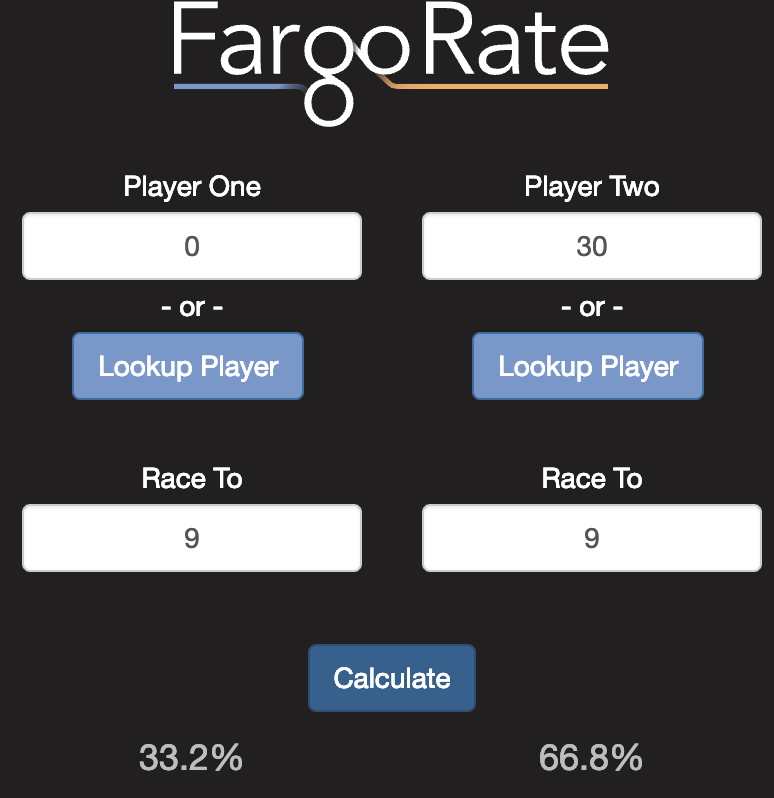
There are several matches with a 30-point gap, such as Fedor Gorst (808) vs Petri Makkonen (778), Joshua Filler (816) vs David Alcaide (786), and Ruslan Chinakhov (784) vs Nick Malaj (754). But to get a big enough number, we need to go three points in either direction. What we find is 107 matches with a rating gap between 27 and 33 points. Of these, 71 were won by the higher-rated player and 35 were won by the lower-rated player. This is as close to 2-to-1 as you can get.
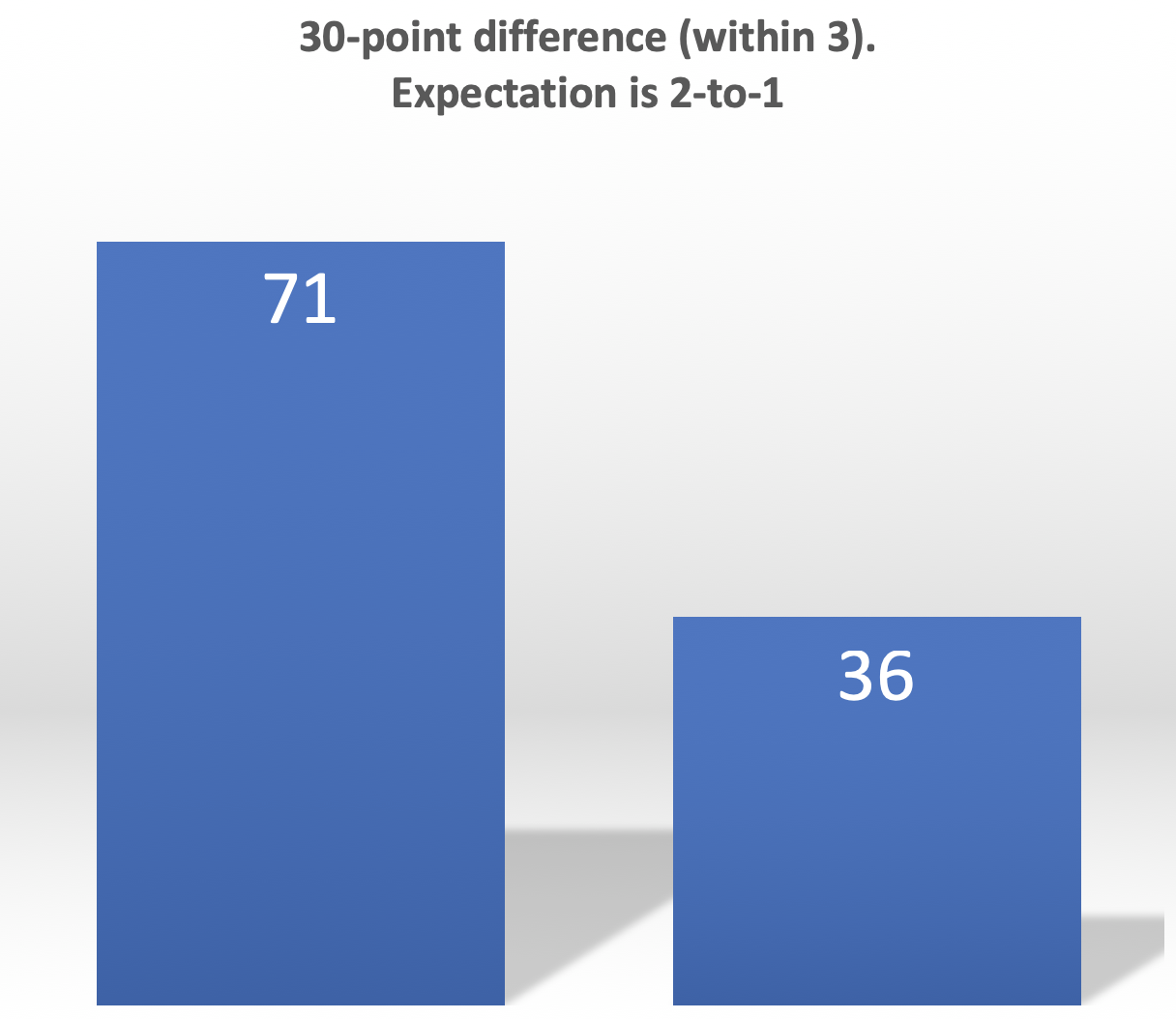
Next we seek the rating difference that corresponds with match odds of 4-to-1. That's 58 points. Now we have to go five points on either side to get a reasonable number of matches. This gives 97 matches of which 80 were won by the higher-rated player and 17 won by the lower-rated player. That's not bad. 78-to-19 would be as close to 4-to-1 as you can get.
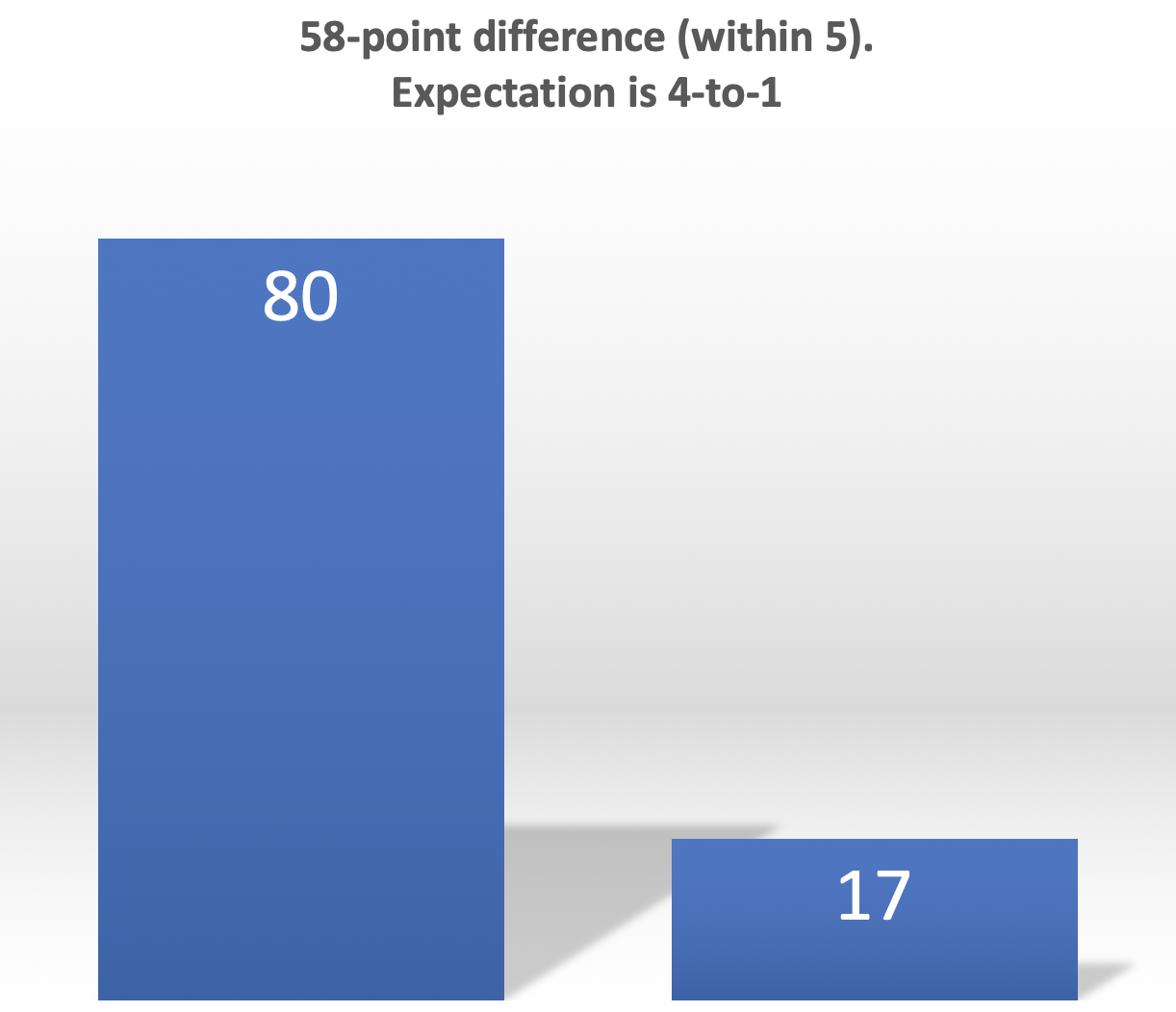
We get odds of 7-to-1 with a rating gap of 80 points. Here, going five points on either side, we find 61-to-8. That's almost as close to 7-to-1 as you can get.
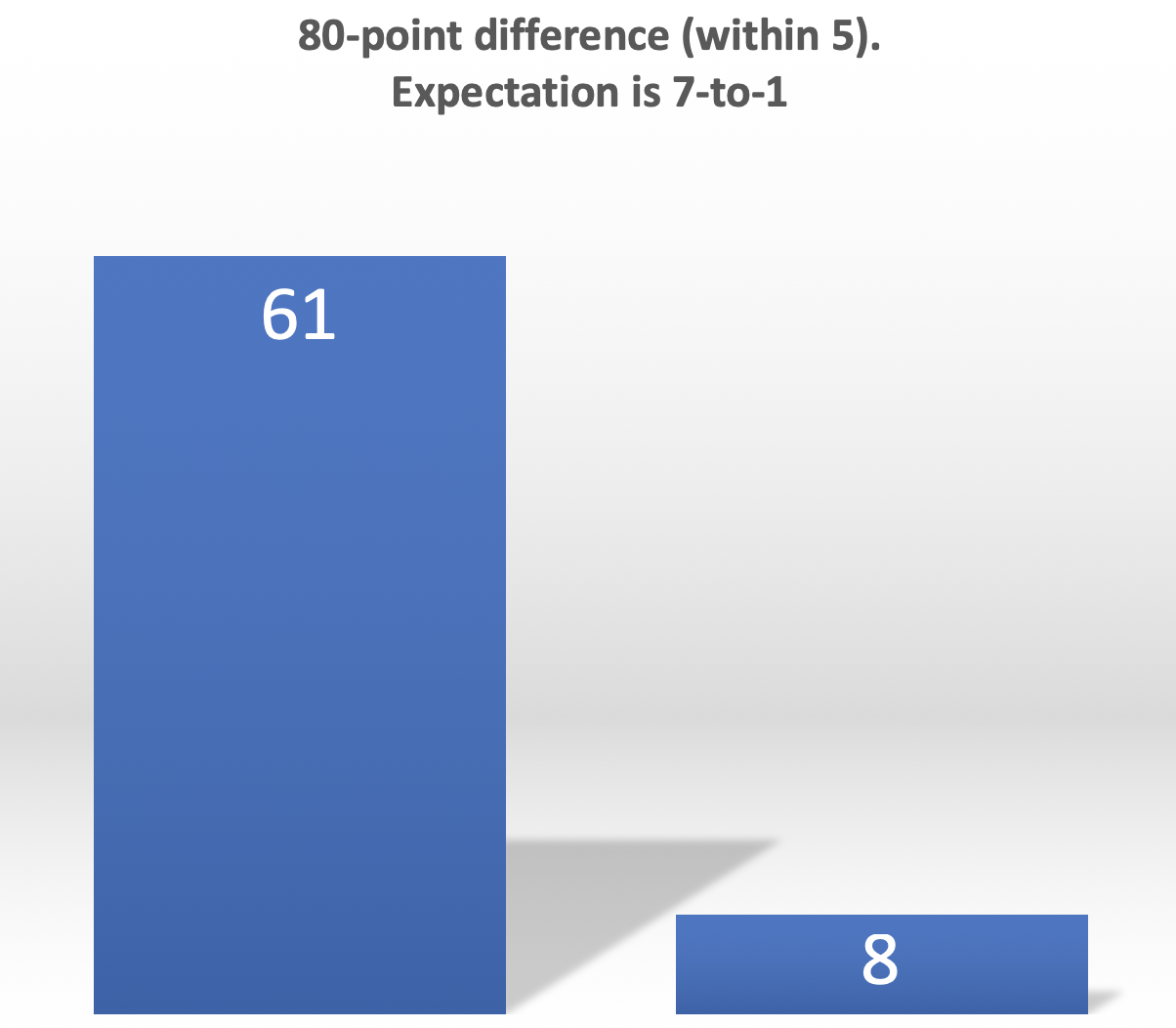
Finally, we note odds of 20-to-1 are expected with a 116-point rating gap. There are 41 matches with a gap that is within 6 points of 116 points, and 39 of them--all but 2--were won by the higher-rated player. That's as close to 20-to-1 as you can get.
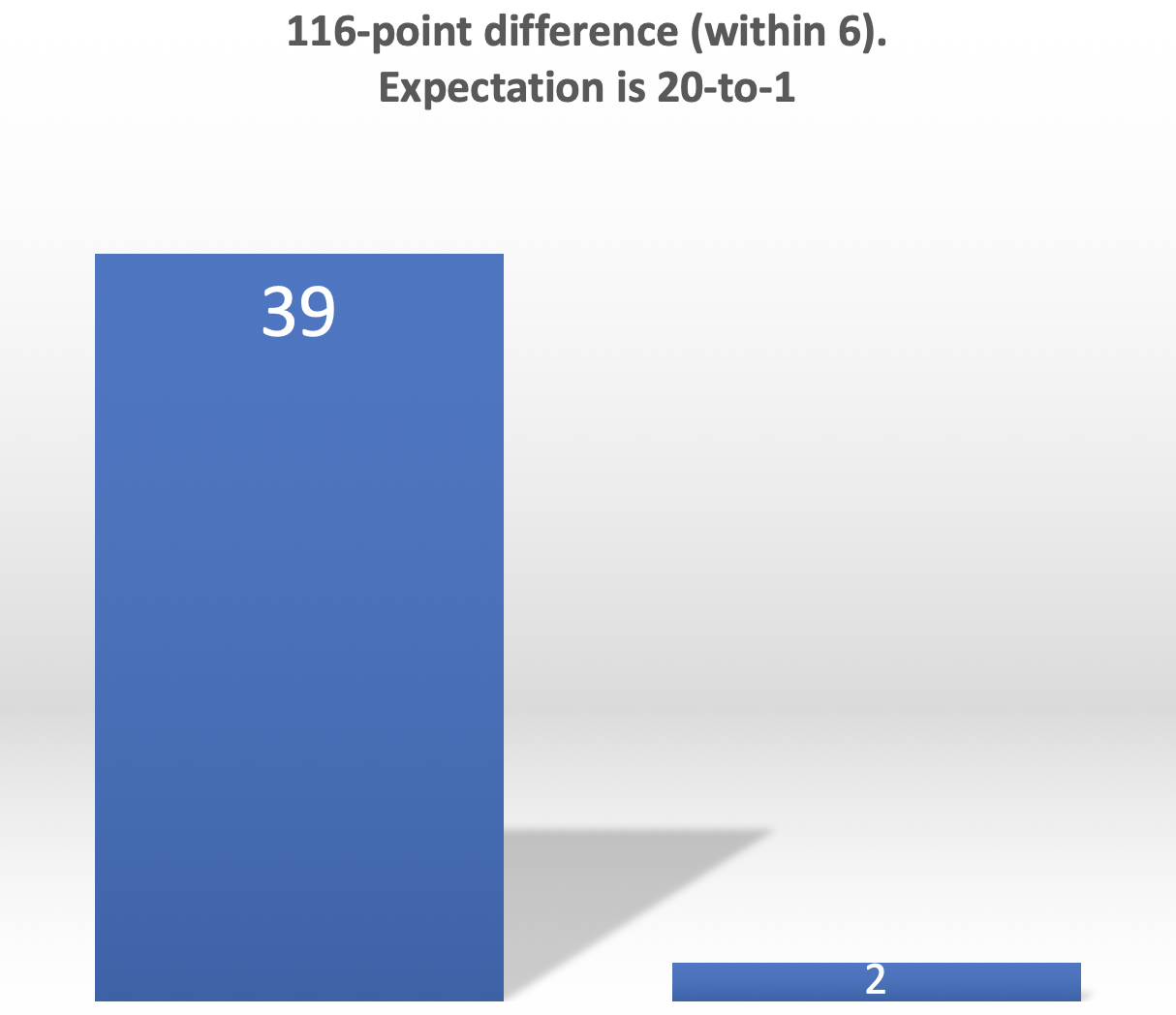
Who played these 116-point-gap matches?
Here are some examples. There is David Alcaide (ESP, 786) vs Lukas Andersson (SWE, 673). David is a well known pro with over 5,000 games in the system. But where do Lukas's 2700 games come from? Well there are several Eurotour events as well as European Championships and many events in Upsala and Stockholm and elsewhere in Sweden. Another is Corey Deuel (USA, 781) vs Thomas Vanbroekhoven (BEL, 670). Corey has 9,500 games in the system, but where do Thomas's 577 games come from? Well Thomas has played in several Eurotour events as well as the Ardenenn Cup in Luxembourg and the BCA Pool League International event in Las Vegas.
What about bigger rating gaps?
There are 65 matches with a rating difference between 150 and 250 points. All of these were won by the higher-rated player except for one: Yvonne Ulmann-Hybler (GER, 570)'s 9-to-8 win over Benji Buckley (GBR, 724). Where do Yvonne's 1,200 games come from? Well she's played many events against Women throughout Europe including Eurotour events and German Championships. And she's also played in the women's division of the China Open. In addition, she's played a handful of events against men. This is the kind of coupling that insures Fargo Ratings are balanced between men and women and between Europe and Asia.
What about Benji Buckley? He has 4600 games in the system. Well Benji has many events from the Great Britain 9-Ball Tour. He also has played US Open and Steinway Classic in the United States as well as several regional events in Florida. And of course Benji has played in many Eurotour events.
How about odds for an individual match?
Will the odds computed for an individual match be as reliable as the ones shown here? In general no. Here when we look at many pairs of players, we benefit from some cancellation. That is, because of uncertainty in the individual ratings, some ratings gaps are over estimated and others are underestimated. And these effects tend to wash out. For an individual pair of players, it could be one player's rating is running a bit high and the other player's rating is running a bit low and these errors add in determining the rating gap. As usual, this is less of an issue as the players get more and more games in the system.
More data makes us better, always.